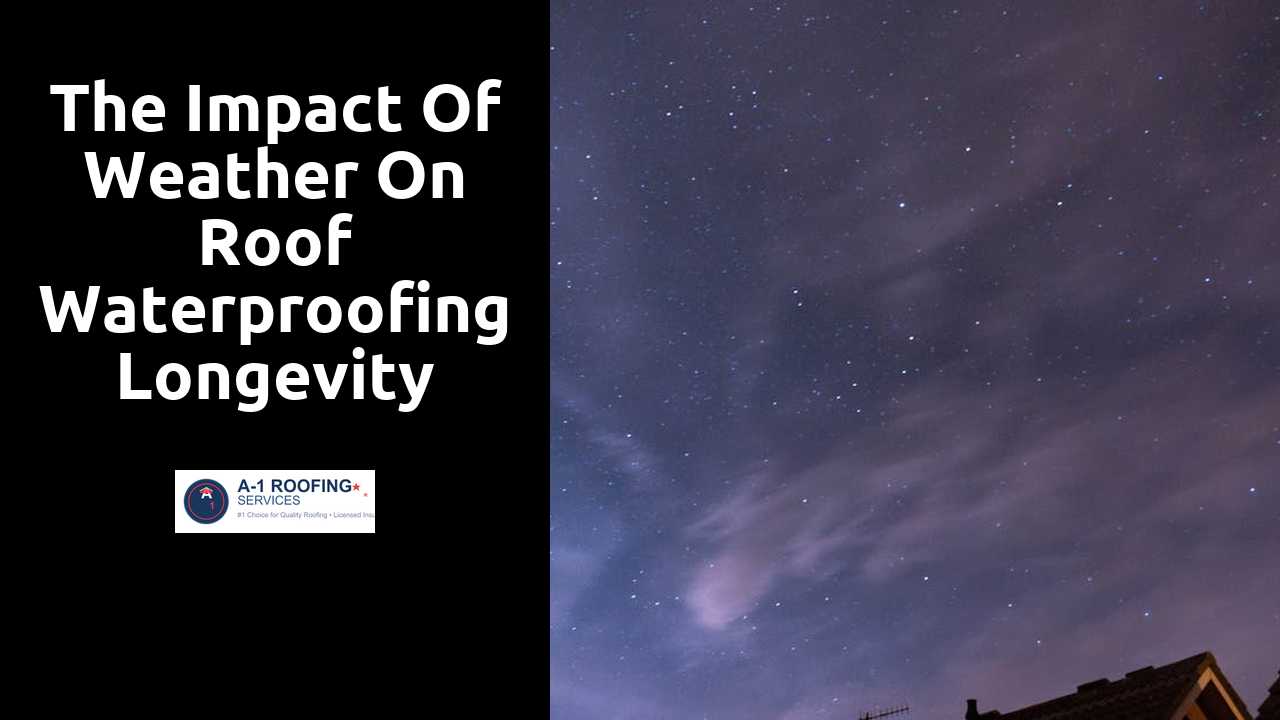
The Impact of Weather on Roof Waterproofing Longevity
Table Of Contents
Humidity and Moisture Levels
High humidity and moisture levels significantly influence the performance of roof waterproofing systems. Prolonged exposure to damp conditions can cause materials to deteriorate faster than expected. Over time, this can lead to compromised seals and joints, allowing water infiltration. Additionally, the presence of moisture can promote the growth of mold and mildew, which further degrades roofing materials. Ensuring a watertight system requires knowledge of the local climate and weather patterns to choose appropriate materials and installation methods.
When moisture levels rise, the efficacy of waterproofing products can diminish. Many of these products depend on specific environmental conditions during application to achieve optimal adhesion and durability. Excess humidity can interfere with the curing process, potentially leading to weaknesses in the waterproof layer. Homeowners should monitor humidity levels consistently throughout the year. Understanding these fluctuations is crucial in deciding when to apply maintenance treatments or reapply waterproofing agents.
Navigate to this website to learn more.
How Damp Conditions Influence Waterproofing Efficacy
Damp conditions can significantly affect the performance of waterproofing materials. When roofs are consistently exposed to high humidity or moisture, the effectiveness of sealants and membranes may diminish over time. Prolonged exposure to these elements can lead to material degradation, increasing the risk of leaks and water infiltration. Additionally, mold and mildew can thrive in such environments, further compromising the integrity of waterproofing solutions.
The interaction between moisture and underlying roof structures also plays a critical role. Water can infiltrate nooks and crannies, causing rotting or corrosion of supporting materials. If the underlying components of a roof fail, even the most advanced waterproofing measures can be rendered ineffective. Regular assessments of roof conditions and addressing any indications of dampness can help maintain the longevity and reliability of waterproofing systems.
Wind and Storm Damage
High winds and severe storms present significant challenges for the structural integrity of roofs. Wind can lift shingles, causing them to loosen or tear away entirely. This exposure can create vulnerabilities that allow rainwater to penetrate the underlying layers, compromising the waterproofing system. Additionally, debris carried by strong winds can batter roofing materials, leading to physical damage that reduces their lifespan and effectiveness.
Properly designed roofing systems should be equipped to withstand harsh weather conditions. Regular maintenance becomes essential to ensure that shingles and seals are tightly fitted, especially in areas prone to storms. Homeowners should consider investing in impact-resistant materials and ensuring that roofs have adequate drainage systems to handle heavy rainfall. A proactive approach can help minimize the potential for damage and extend the life of roof waterproofing.
Protecting Roofs from Weather-Induced Wear
To minimize weather-induced wear on roofs, employing high-quality materials is essential. Common roofing materials, such as asphalt shingles and metal, have varying degrees of resistance to harsh conditions. Opting for products that offer superior durability against wind, rain, and UV rays can significantly extend the lifespan of a roof. Regular inspections also play a crucial role in identifying potential vulnerabilities, allowing for proactive repair and maintenance.
Implementing protective measures can further enhance a roof's resilience. Using roof coatings or sealants helps create a barrier against moisture and reduces the risk of leaks. Ensuring proper drainage systems are in place prevents water accumulation, which can lead to structural damage over time. Additionally, reinforcing roofing fixtures can provide extra protection against high winds, mitigating the impact of severe storms. Maintaining a routine care schedule is necessary to safeguard roofs from the elements effectively.
Seasonal Changes and Maintenance
Each season brings unique challenges to roof maintenance. During spring, heavy rains can exacerbate existing weaknesses. This time of year often requires inspections to detect any leaks or water damage. Summer heat can lead to expansion and contraction of roofing materials. Homeowners should monitor for signs of wear such as cracking or curling.
Fall presents an opportunity for preparation before winter sets in. This is the ideal time to clean gutters and remove debris that can trap moisture. Inspections should focus on areas where leaves accumulate. As temperatures drop, the risk of ice dams increases. Regular maintenance during these transitional periods can significantly extend the life of a roof and improve its effectiveness against the elements.
Best Practices for Roof Care Throughout the Year
Regular inspection of roofs is crucial for maintaining waterproofing integrity. Homeowners should check for visible signs of wear, such as cracked seams or damaged flashing. Clearing debris in gutters and drainage systems helps prevent water accumulation. This can further ensure that water does not seep into the roofing materials. Scheduling inspections after severe weather events can also identify potential vulnerabilities early.
Seasonal maintenance plays a pivotal role in extending roof lifespan. In the fall, removing leaves and branches can reduce the risk of mold growth. During winter, ensuring snow and ice are safely removed prevents added weight and moisture retention. Spring is an ideal time to assess any winter damage and perform necessary repairs. In the summer, applying UV protection helps shield roofing materials from intense sunlight and heat.
Related Links
Expert Tips for Maintaining Waterproof RoofsAssessing Waterproofing Needs for Different Roof Types